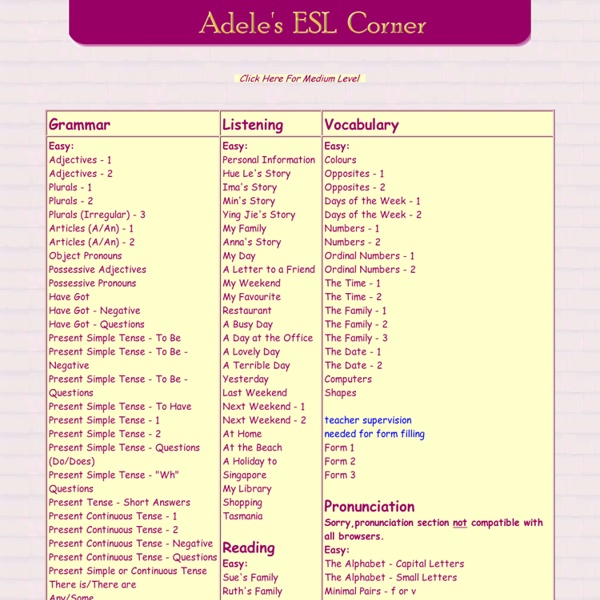



Can We use 'can' to talk about 'possibility'. Can you do that? I can't manage to do that. You can leave your car in that parking space. You cannot smoke in here. Notice that there are two negative forms: 'can't' and 'cannot'. We use 'can' to talk about 'ability'. I can speak French. We use 'can' to ask for and give permission. Can I speak to you or are you too busy? We use 'can' in offers, requests and instructions. Can I help? We use 'can' with 'see' 'hear' 'feel' 'smell' 'taste' to talk about something which is happening now . I can smell something burning. We can use 'can't' for deduction. You can't be hungry. Return to List of Grammar Lessons
Word 2013: Getting to Know Word Introduction Video: Getting to Know Word Watch the video (4:14). Word 2013 is a word processing application that allows you to create a variety of documents like letters, flyers, and reports. Getting to know Word 2013 Word 2013 is very similar to Word 2010. The Word interface When you open Word 2013 for the first time, the Word Start Screen will appear. From the Word Start Screen, locate and select Blank document to access the Word interface. The Word Start Screen Click the buttons in the interactive below to become familiar with the Word 2013 interface. Command Group Each group contains a series of different commands. Quick Access Toolbar The Quick Access Toolbar lets you access common commands no matter which tab is selected. By default, it includes the Save, Undo, and Repeat commands. Account Access From here, you can access your Microsoft Account information, view your profile, and switch accounts. Ruler The Ruler is located at the top and to the left of your document. Zoom Control Document Views
Can / Can t Look at the pictures and choose the best answer: 1) Can he swim? 2) Can he play soccer? 3) Can she draw? 4) Can he walk? 5) Can he drive a bus? 6) Can he see? 7) Can she sing? 8) Can they cook? Word 2013: Formatting Text Introduction Video: Formatting Text Watch the video (3:02). Formatted text can draw the reader's attention to specific parts of a document and emphasize important information. Optional: Download our practice document. To change the font: By default, the font of each new document is set to Calibri. Select the text you wish to modify. The new font style When creating a professional document or a document that contains multiple paragraphs, you'll want to select a font that is easy to read. To change the font size: Select the text you wish to modify. The new font size To change the font color: Select the text you wish to modify. The new font color Your color choices aren't limited to the drop-down menu that appears. The Colors dialog box To highlight text: Highlighting can be a useful tool for marking important text in your document. Select the text you wish to highlight. The highlighted text To remove highlighting, select the highlighted text, then click the Text Highlight Color drop-down arrow. .
Going to There is no one 'future tense' in English. There are 4 future forms. The one which is used most often in spoken English is 'going to', not 'will'. We use 'going to' when we want to talk about a plan for the future. I'm going to see him later today. They're going to launch it next month. Notice that this plan does not have to be for the near future. When I retire I'm going to go back to Barbados to live. We use 'going to' when we want to make a prediction based on evidence we can see now. Look out! We can replace 'going to go' by 'going'. I'm going out later. Return to List of Grammar Lessons
Word 2013: Indents and Tabs Introduction Video: Indents and Tabs Watch the video (3:50). Indenting text adds structure to your document by allowing you to separate information. Optional: Download our practice document. Indenting text In many types of documents, you may wish to indent only the first line of each paragraph. First line indent Hanging indent To indent using the Tab key: A quick way to indent is to use the Tab key. Place the insertion point at the very beginning of the paragraph you wish to indent. The indented paragraph If you can't see the ruler, select the View tab and then click the check box next to Ruler. Showing the Ruler